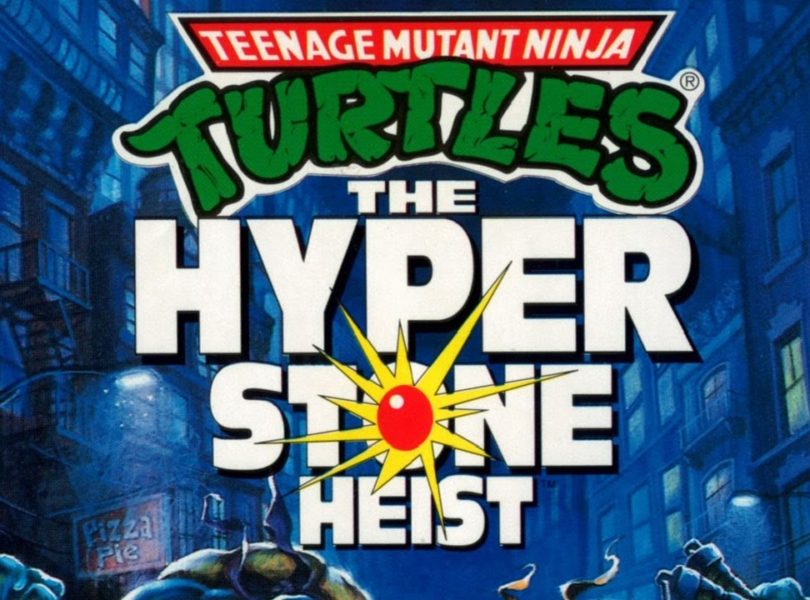Release Date: December 11, 1992
Developer: Konami
Publisher: Konami
The Nintendo vs Sega console war of the early 90s produced some very intriguing subplots. There was the way the console manufacturers attacked each other in commercials. There was also the Mortal Kombat blood controversy. However, one hidden subplot helped fuel the console war even more, and the subject of today’s retro review is one of the direct results of that hidden subplot.
Prior to 1991, there was no way Konami – or any publisher – could release a game for a non-Nintendo console. This was due to Nintendo’s very strict licensing requirements back then. One of the limitations Nintendo levied on game publishers was a two-year exclusivity clause for their titles. Publishers could not port any titles sold on a Nintendo console to a competitor until long after people would want them.
Additionally, Nintendo was known to come down on any retailers who sold a competitor’s wares. They would threaten the retailers with fewer or no merchandise allotments if they sold a competitor’s products. This plus the two-year exclusivity limitation kept publishers in line. Bigger publishers like Konami, Capcom, and Acclaim acceded to Nintendo’s demands, afraid of being tossed by the most successful console manufacturer at the time.
Eventually, Nintendo’s shenanigans were found out by the FTC, and an investigation was opened, alleging that Nintendo engaged in anti-competitive practices and price fixing with retailers. Eager to avoid serious penalties, Nintendo struck a deal with the FTC. As a way to assuage the publishers, they loosened the two-year exclusivity clause and backed off from retailers who wanted to sell a competitor’s systems and games.
This is how we ended up with Konami’s Teenage Mutant Ninja Turtles: The Hyperstone Heist on the Sega Genesis in the US. The game was released here on December 11, 1992. The game also saw a release in Japan and Europe, but under different names. In Japan, it was released on December 22, 1992 as Teenage Mutant Ninja Turtles: Return of the Shredder. Europe saw Teenage Mutant Hero Turtles: The Hyperstone Heist released in 1993.
The game, a take on the Super NES’s Teenage Mutant Ninja Turtles IV: Turtles in Time, would have never existed otherwise. Titles like this were among the vanguard of reimagined SNES games that developers rushed out on the Genesis.
[youtube id=”XNaLn2LuUck” autoplay=”no”]
TMNT: The Hyperstone Heist retains all the gameplay, graphics, and music from the classic SNES side-scrolling beat-em-up. The plot was slightly changed from Turtles in Time. In the Genesis game, Shredder possesses the Hyperstone, an item from Dimension X. He uses it to shrink Manhattan Island as a show of his new power. Up to two players can pick from the four Turtles and battle Shredder’s forces, either solo or co-op, across five levels, one less than the SNES version. The levels were remixed versions of levels found in Turtles in Time and TMNT II: The Arcade Game on the NES, in addition to two exclusive levels. Although there was one less level in The Hyperstone Heist, the levels overall were longer on the Genesis version.
Gameplay is exactly same the on the Genesis as it is on the SNES. Control is precise and tight; co-op play is smooth and free of any slowdown. The game does play a bit faster on the Genesis, and the addition of a Run button helps the game feel faster still. Graphically, there is virtually no difference. The Genesis version has slightly more jagged sprites, but the colors are a bit brighter than the SNES version. Also, the SNES version has extra but minor graphical flourishes, like Turtles throwing enemies into the screen.
Sound is where the Genesis shows its cracks a bit. The Genesis is known for having more tinny sounds compared to the SNES, and the voice samples are slightly more compressed. But the music is still as awesome. Overall, this complaint is minor.
At the end of the day, both versions shine in the exact same way: the co-op play is extremely fun, and TMNT fans will love plowing through dozens of Foot Clan grunts before testing their mettle against the level bosses, who are familiar Shredder henchmen.
Does this game hold up? HELL YES! Neither home console game has the four-player co-op play of the Turtles in Time arcade game, but two player co-op is more than satisfying enough. For anyone looking for a classic beat-em-up for the Genesis not named Streets of Rage, this game is a must.
Unfortunately, neither Teenage Mutant Ninja Turtles: The Hyperstone Heist nor its SNES cousin made an appearance on any Virtual Console. In order to play this gem legitimately, you will need to own a Sega Genesis and the cartridge. There other less savory ways to play this game, but…I wouldn’t know about those things. Either way, this is an excellent game. I thank Nintendo for loosening their grip and allowing Konami to release this game on the Genesis.
Good: Excellent gameplay; colorful, great graphics; awesome co-op fun
Bad: Sound is a bit tinny, voice samples are heavily compressed
Final score: 9/10


